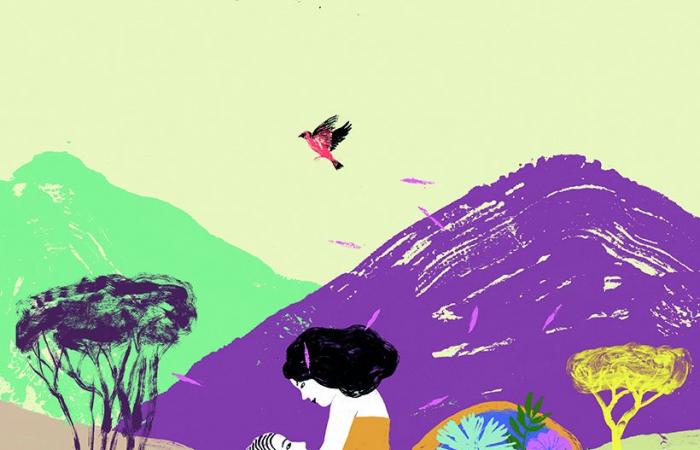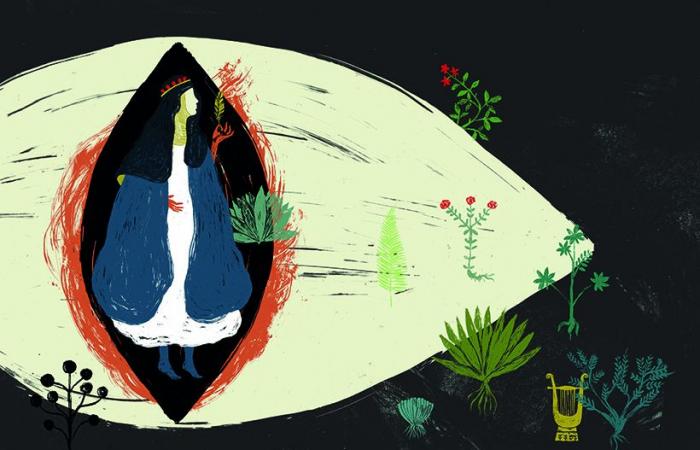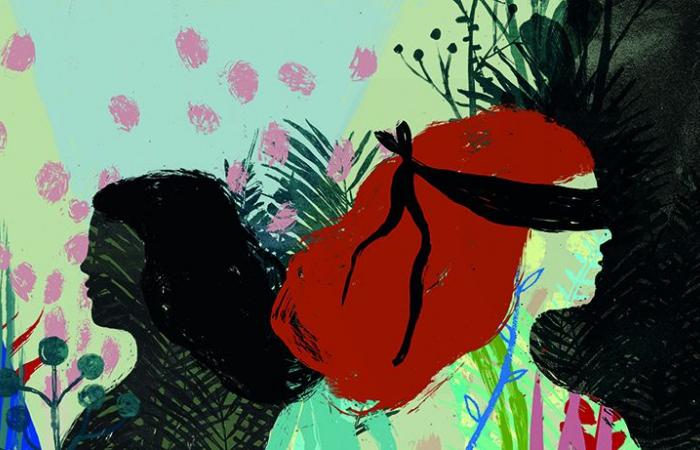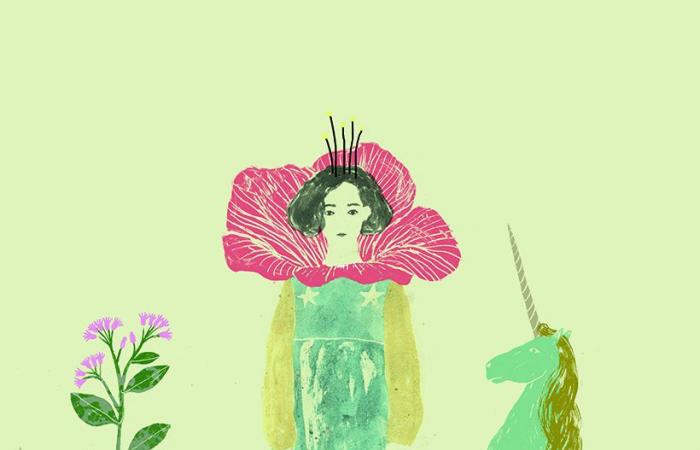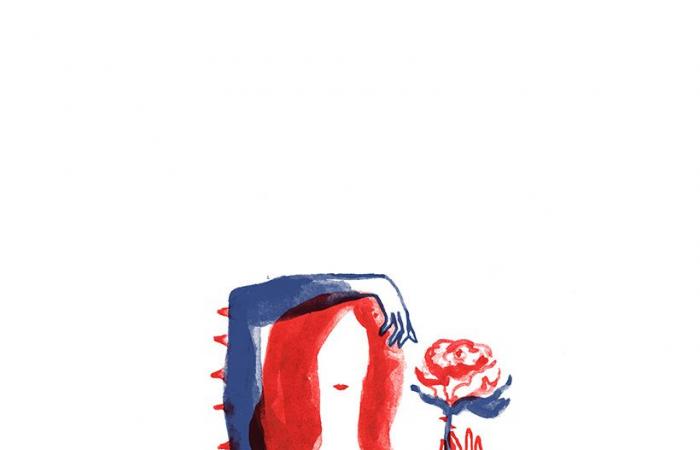Elisa Talentino was born in Ivrea (Turin, Italy) in 1981. He made illustrations for The New Yorker, The New York Times either Washington Post among many others. She won the Gold Medal of the 3 × 3 Mag Professional Show in New York for two consecutive years (2017/2018) and has been selected in international illustration competitions such as Ilustrarte (2014), Children’s Book Fair of Bologna (2015) and Society of Illustrators. In 2020 he published together with Sara Gamberini the illustrated book When the world was all blue for the children’s publishing house Topipittori, which we talked about with her in these pages. She made the animated short film Dandelion, which was selected in the main international festivals and which we also talk about here. A selection of his works are part of the Permanent Collection of the FaMuseum of Rome, Contemporary Art Collection, Ministry of Foreign Affairs and International Cooperation. She lives and works in Turin.
We enter your website and are greeted by a couple, dancing naked, interacting through a flower, looking at each other and being caressed by what seems like a pleasant silk sheet and a warm breeze. They seem to be apart from the world and time. Is there anything more utopian than this scene?
Dandelion (dandelion in Spanish), is an ancient dance, a courtship ritual. A dandelion flower to blow wishes. The animation that opens my website is an excerpt from a work I made inspired by a silent dialogue between bodies. The two dancers dance on a bourrée two-time: a dance with medieval origins that in this context assumes sentimental and loving meanings, an almost theatrical transposition of the dynamics of approach and seduction. The dancers approach each other, touch each other and move away, look for each other and avoid each other, without ever touching each other.
The dandelion is the oracle of spring. It is said that lovers gave their hopes to the flower and made them fly to make them come true. The soundtrack, composed by Julia Kentis a bourrée experimental contemporary based on the traditional structure of the piece.
With the animated short Dandelion you won at the Glocal Film Festival, along with composer Julia Kent. How did this graphic project come about?
The project Dandelion was born from an artist residency that took place in the mountainous areas of the border between Italy and France. The project, called Borderscapesfeatured the participation of four Italian and four French artists (directors, photographers, illustrators and composers) called to tell with their eyes a work that expressed the history and atmosphere of the border places that had welcomed them.
On this occasion the collaboration with the Canadian cellist and composer was born. Julia Kent (whose career began in the 1990s, including solo albums, soundtracks and collaboration with the American group Anthony and the Johnsons, which made her famous among the general public). Julia plays a traditional instrument in a contemporary way and her performance of her original piece was perfect for the atmosphere of the animation.
Your art conveys peace, tranquility, and I would say that only pleasant things happen in the scenarios of your imagination. A dance, a deep sleep with friendly animalsthem, a time of reading in the middle of nature where the fauna and flora are always beautiful and lush. Is your art a way of “revealing yourself” to the harsh reality we currently live in?
Art is for me a way of not losing the fine thread that still unites me to the subtle feeling of childhood, where the perception of the invisible was strong, tangible. I spent a lot of time with grandparents and family elders, custodians of a universe in which the presence of ancestors, guardian angels, and prayers/magic formulas to ward off evil was constant. Magic was a very specific element of life, the old town stories, which some relative always swore were true, made real the possibility of meeting an elf in the forest, an ancestor sitting on my couch or my late great-grandmother would deliver a message to me through my pet.

A phrase by the American dance critic and writer Edwin Denby says: “There is a little madness in dancing that does everyone a lot of good.” Maybe this phrase explains why so many people always appear dancing in your graphic work?
It may be that my fascination with dancing comes precisely from my inability to dance well, to the rhythm. I have never been a great dancer, but like many girls, I have always dreamed of being one. Could pspend hours observing the perfection of their movements, the magic of coordination and the immense amount of messages that a body can express through gesture.
In some way I associate dance with graphic representation, from some points of view it is a formidable medium to tell stories without using words.
A great teacher for me was Pina Baush. I owe a large part of my anatomical studies to her, I watched her dance group over and over again to analyze the movements of the muscles, to understand how it brings grace and elegance to the human body.
Thanks to her I learned to convey the strength and flexibility of bodies and above all to convey moods through body language, a very important aspect for an illustrator.
Studying Pina allowed me to understand how a small detail in body position, such as the position of a finger, the way you hold your arms or legs, can suggest a sensation, a feeling, a pain, and a small variation in pose. can completely change the meaning of the image.

The concept of “utopia” is the central axis of this issue. in your book When the world was blue, which you published with Sara Gamberini, do you think we see a story very close to what would be a utopia for you? What does the phrase “a utopian world” mean to you?
For me, a utopian world is one in which our magical visions begin to enter the real world. Mia, the girl protagonist of the story, was an unconscious sorceress, she does magic without realizing it, and she talks to a kind of mystical chickens that are there and are not there, which reminded me a lot of the guardian angels, so praised by my grandmother during my childhood. In the book I represented Mia as a normal girl, dressed in a tracksuit, coat or pajamas depending on the occasion, because magic doesn’t like to show off, it happens discreetly in the middle of daily tasks. Although there is always some charming little detail that escapes our control, such as the playful flames that escape from the girl’s neck or skirt.
Mia, in my imagination, has access to a reality parallel to the one we know: she sees things that perhaps exist but are not visible to everyone.
Previously, in 2018, you won the Gold Medal at the 3×3 Mag Professional Show in New York for two consecutive years. What did this recognition mean to you?
Awards help to have confirmation from the outside world, they certainly alleviate some of the insecurities that all authors inevitably have and help to consolidate the perception of the artist’s professionalism. In practice nothing changes, let’s say that they are a good business card to give to our clients.
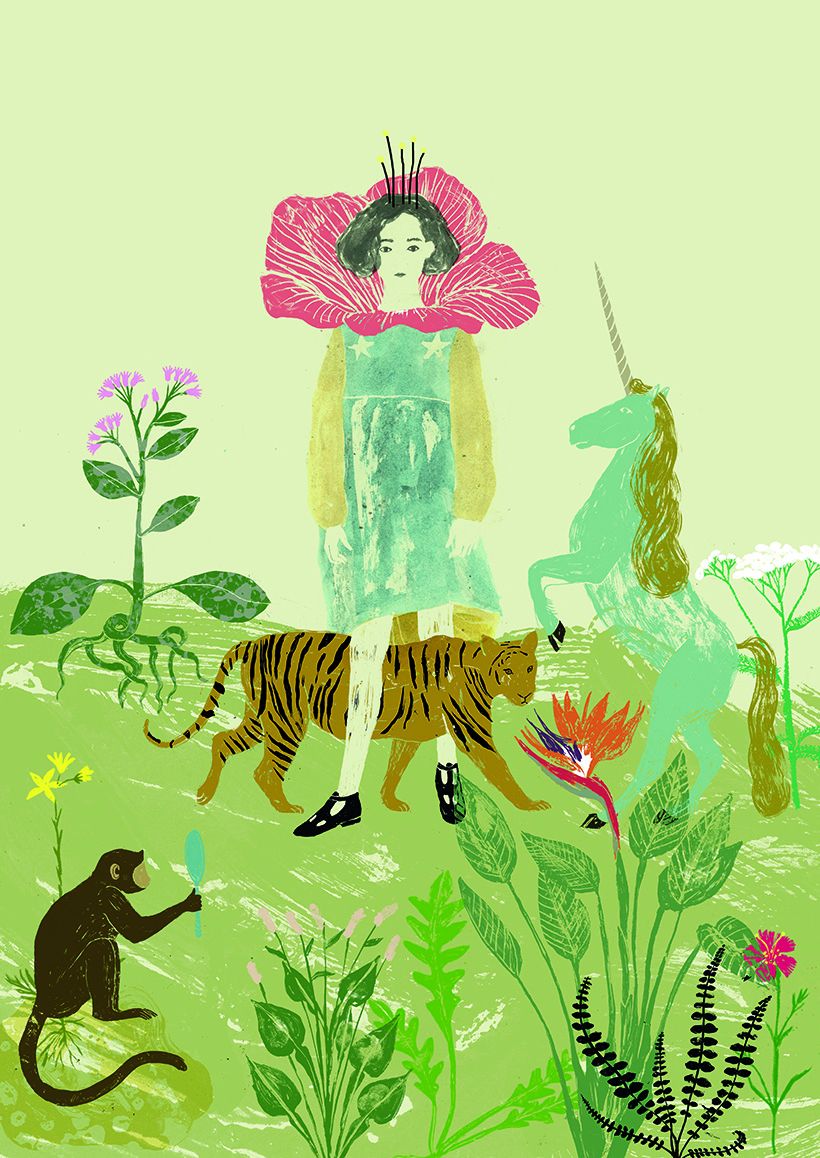
The New Yorker, The New York Times, Washington PostHachette, Bloomsbury Publishing, Yale University Press, The Republic, Il CorriereMondadori, Einaudi, Bur-Rizzoli, Bompiani, Il Saggiatore, Edizioni e/o, Istituto Goethe… What is left for Elisa Talentino to do?
I would very much like to open myself more to other areas of artistic creation, such as design, urban art or three-dimensionality through ceramics or other materials used in sculpture. Before enrolling in the Academy of Fine Arts, I studied ceramics in high school (a artistic baccalaureate specialized in ceramics). For five years I worked the land, learned the basics of shape it, glaze it. Then professional choices led me to illustration, but I would be happy to reopen some doors to this tool as well.
We wonder about projects you are currently immersed in and where we will see your art in the remainder of 2024.
I am currently working on an illustrated fiction book that talks about the symbiosis of man with nature, grandmothers and grandchildren and the transmission of ancestral knowledge, plants and botany. It is a publishing house that promotes values about nature, health, science, history, ecology, culture and art. The book should come out in summer.



